Password Manager For WHMCS
Contents |
About Password Manager For WHMCS
| Password Manager For WHMCS gives you the possibility to store passwords and share them safely with your staff and clients. The module offers various mechanisms allowing you to conveniently manage passwords, send email reminders, as well as integrate with your WHMCS client area. |
- Admin Area Features:
| ✔ Share Access Details With Clients |
| ✔ Share Access Details With Administrators |
| ✔ Share Access Details With Administrators Depending On Their Admin Roles |
| ✔ Define Access Details As Private |
| ✔ Display Clients Access Details In Clients Summary And Clients Tickets |
| ✔ Store All Access Details In Encrypted Format |
| ✔ Adjust Visibility Of Password For Clients/Administrators/Category Members - One Click Only |
| ✔ Extended Permissions For Administrators Allow Access To All Non-Private Passwords |
| ✔ Add Notes To Password |
| ✔ Colorized Display Of Access Details In Admin Area |
| ✔ Links To Website Or Log In Page With Password Used |
| ✔ Password Owner Displayed |
| ✔ Notify Upon Password Change |
| ✔ Send Password Change Reminder |
| ✔ Define Email Templates For Reminder And Notification |
| ✔ Define Time Period For Password Change Reminder |
- Client Area Features:
| ✔ Display And Manage Access Details |
| ✔ Display Access Details Of Owned Services |
| ✔ Create Category |
| ✔ Assign Categories To Access Details |
- General Info:
| ✔ High Level Security With Advanced Two Way Encryption |
| ✔ Multi-Language Support |
| ✔ Supports WHMCS V5 Up To V5.3.14 |
Installation
| This tutorial will show you how to successfully install Password Manager For WHMCS. We will guide you step by step through the whole installation and configuration process. |
| 1. Log in to your client area and download Password Manager For WHMCS. |
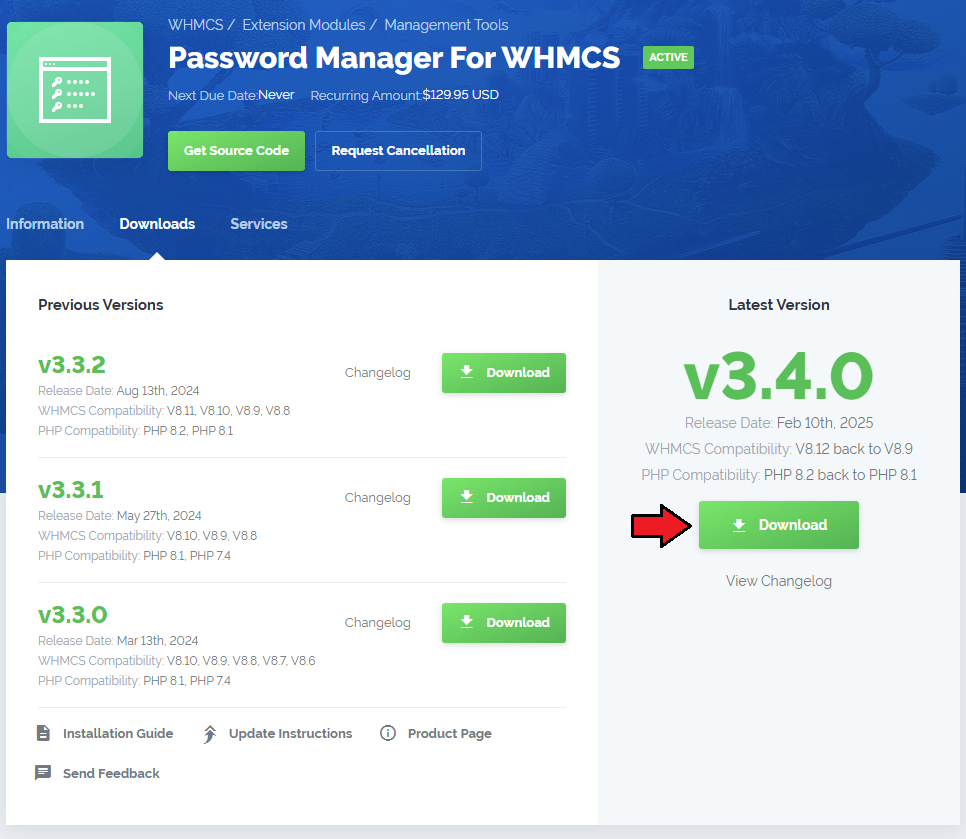
|
| 2. Upload and extract the module into the main WHMCS directory. Files in your WHMCS directory should look like this. |

|
| 3. When you install Password Manager for the first time you have to rename 'license_RENAME.php' file. File is located in 'modules/addons/PasswordManager/license_RENAME.php' . Rename it from 'license_RENAME.php' to 'license.php' . |
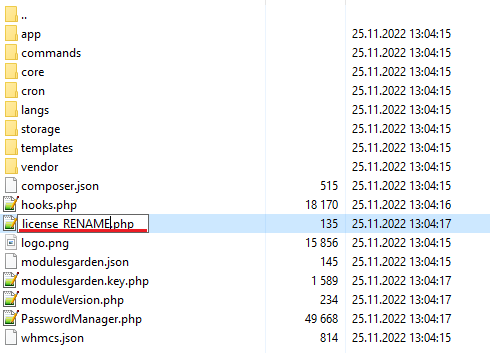
|
| 4. In order to configure your license key, you have to edit a previously renamed 'license.php' file.' Enter your license key between quotation marks as presented on the following screen. You can find your license key in your client area → 'My Products' . |

|
| 5. Now you have to activate the module in your WHMCS system. Log in to your WHMCS admin area. Go to 'Setup' → 'Addon Modules' . |

|
| 6. In the next step you need to permit access to the module. To do so, click on 'Configure' button, select administrator groups which should have access to this addon and press 'Save Changes' . |
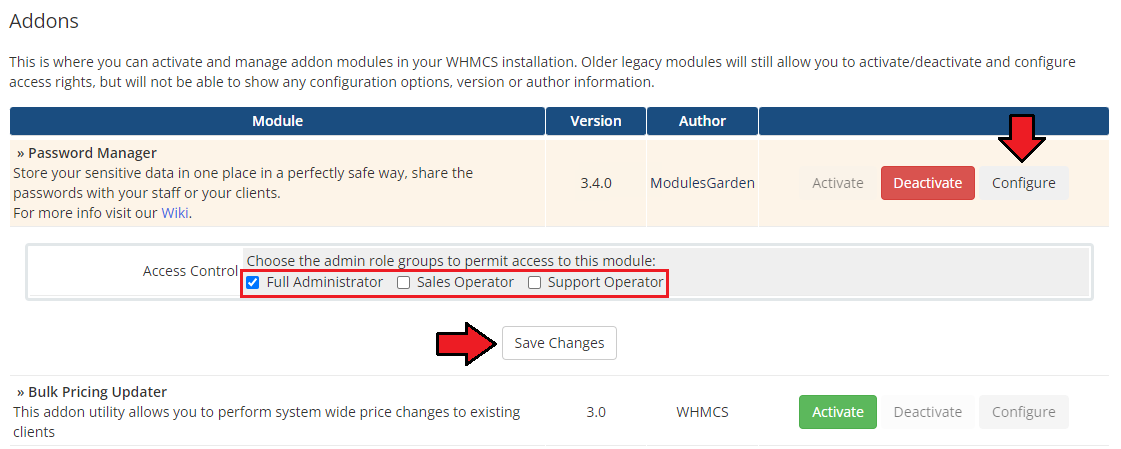
|
| 7. You have just successfully installed Password Manager For WHMCS! You can access your module under 'Addons' → 'Password Manager' . |
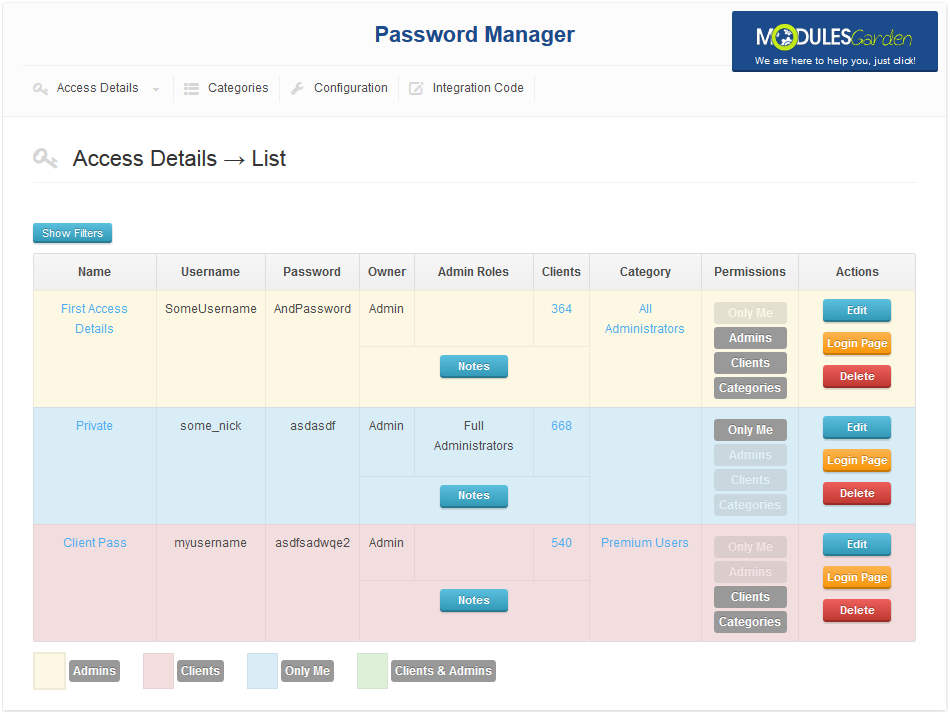
|
Configuration and Management
| Password Manager For WHMCS allows to share passwords in your WHMCS. In this short guide we will present you the possibilities of our module. |
Integration Code
| Integration described below is not required for WHMCS V6 with Six template, where it is integrated automatically. Module allows your customers to view passwords shared to them and manage their own passwords. |
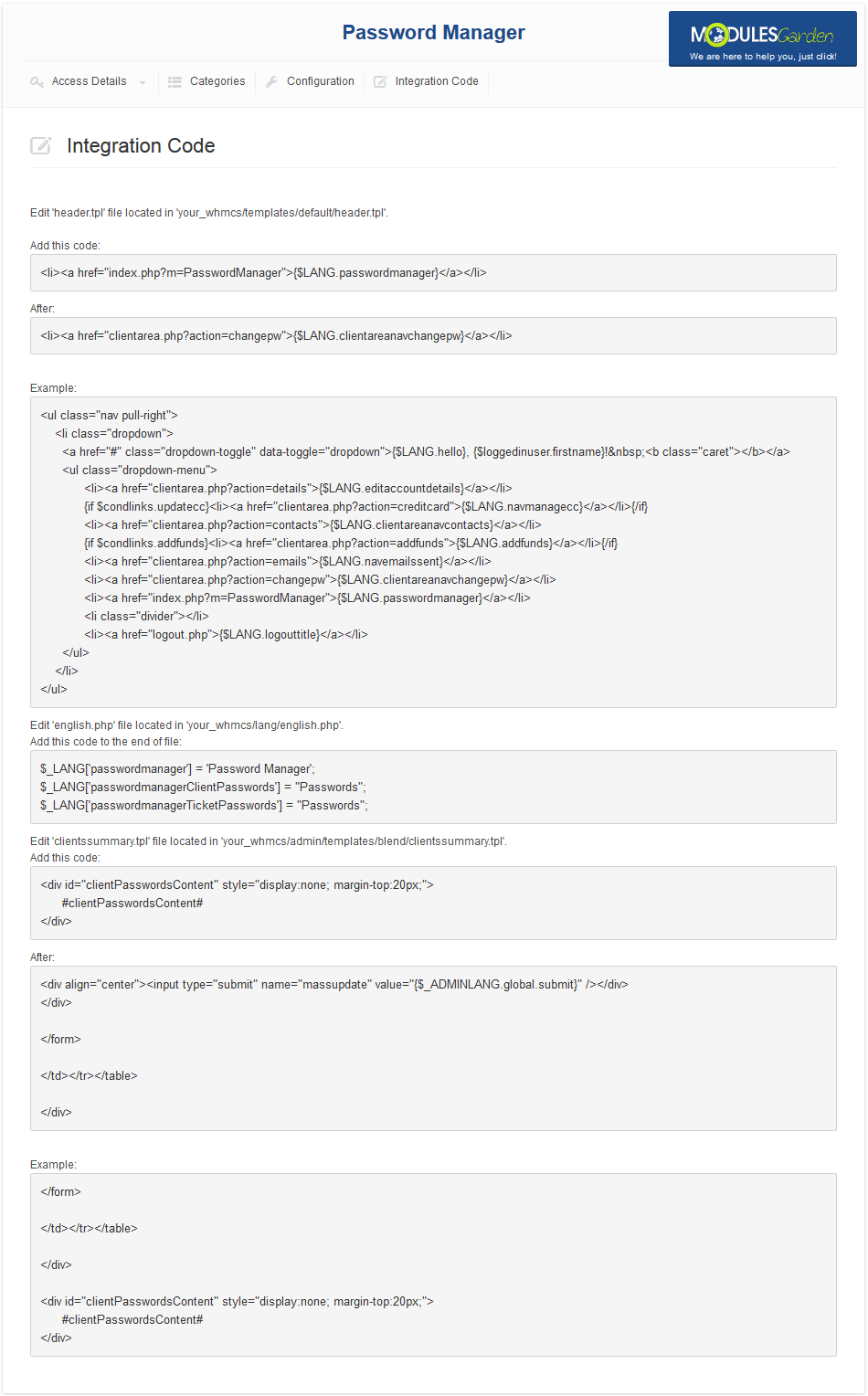
|
| In the client area you will find button marked on the following screen. |
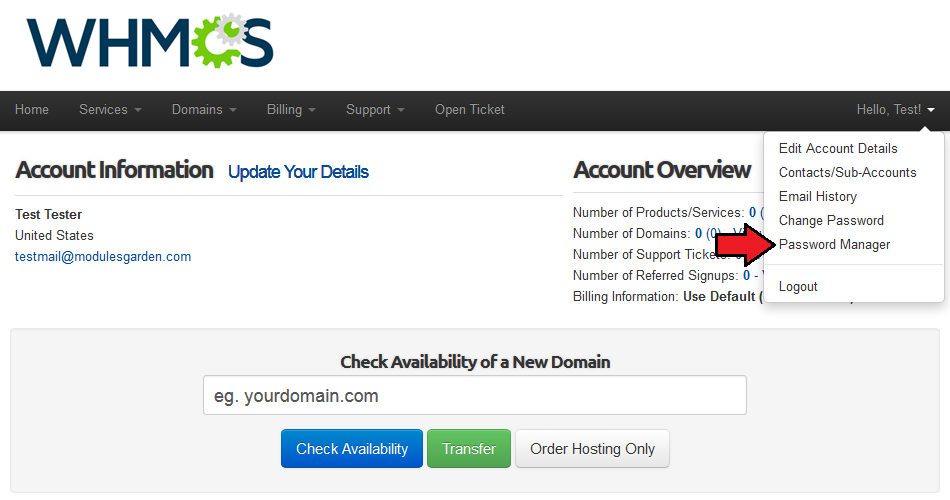
|
Configuration
| 'Configuration' tab allows you to define if your clients can see their products access details while excluding specific products, clients or client groups. You can also decide, if your clients can manage their private access details while excluding right for selected clients or client groups. |
Products Access Details
| 1. 'Display Products Access Details' - If enabled, access details to clients products and services will be displayed in the client area → 'Password Manager' . 2. 'Exclude Client Groups' - Disable display of products access details for client groups which IDs are entered in 'Exclude Client Groups' field. |
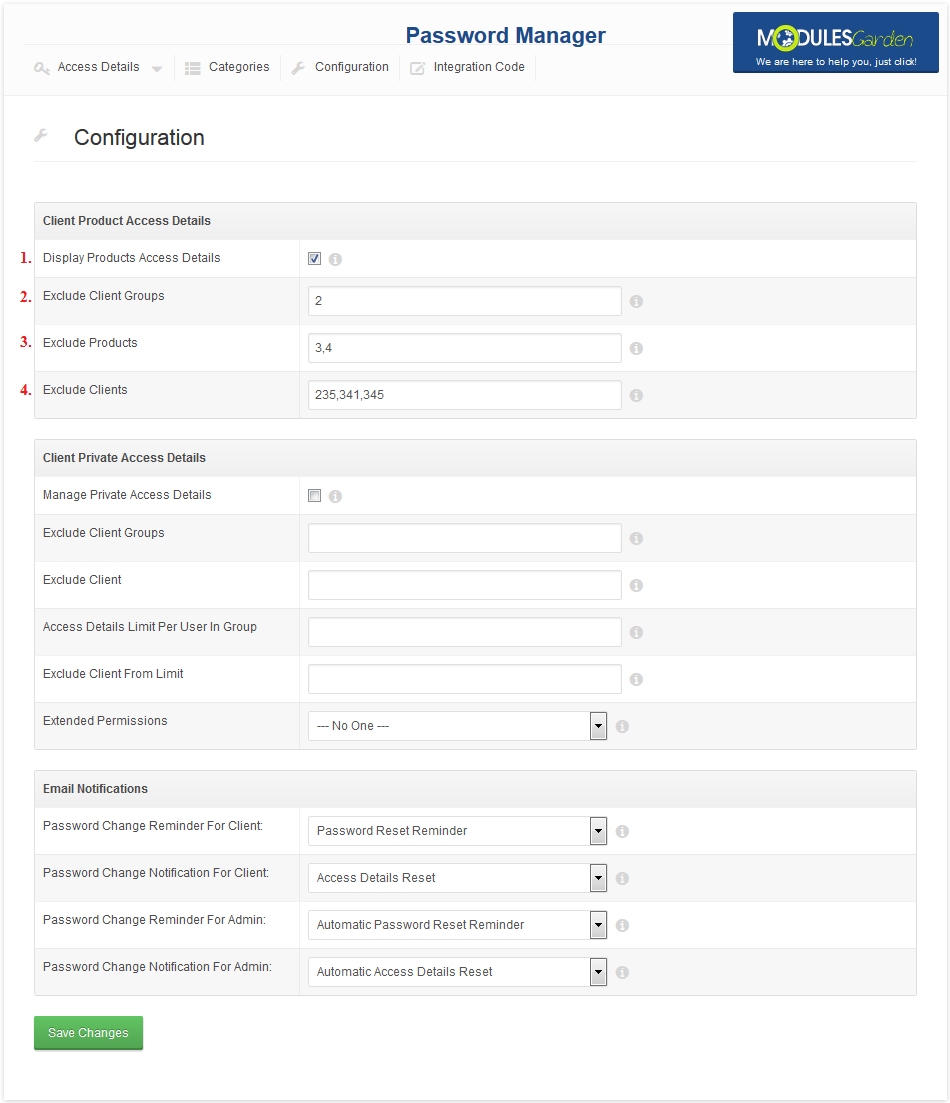
|
Private Access Details
| 1. 'Manage Private Access Details' - Allows to manage private passwords by clients. 2. 'Exclude Client Groups' - Disable private access details management for selected client groups. |
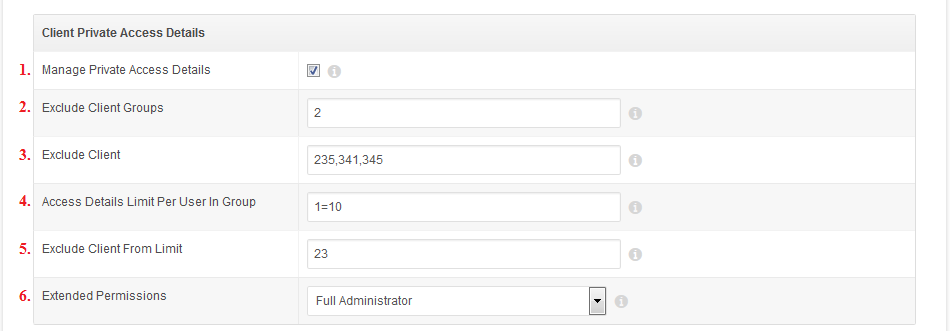
|
Email Notifications
This section allows you to define templates sent by the module.
|
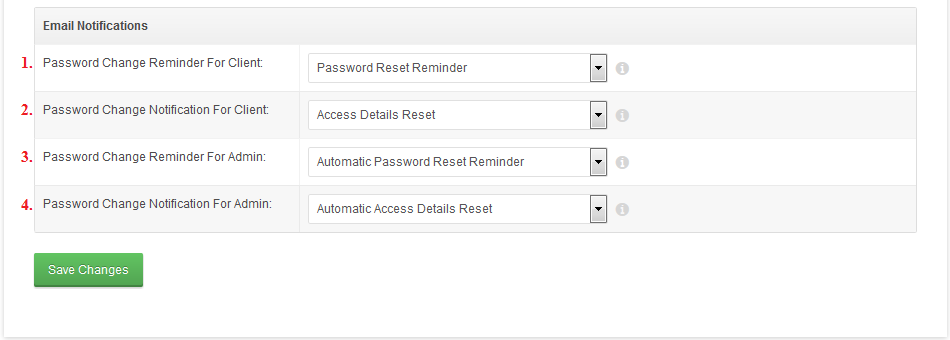
|
Category
| Categories allow you to prepare predefined sets of clients and administrators. Through assigning a category to a password, clients and administrators from that category are granted with permission to view the password. |
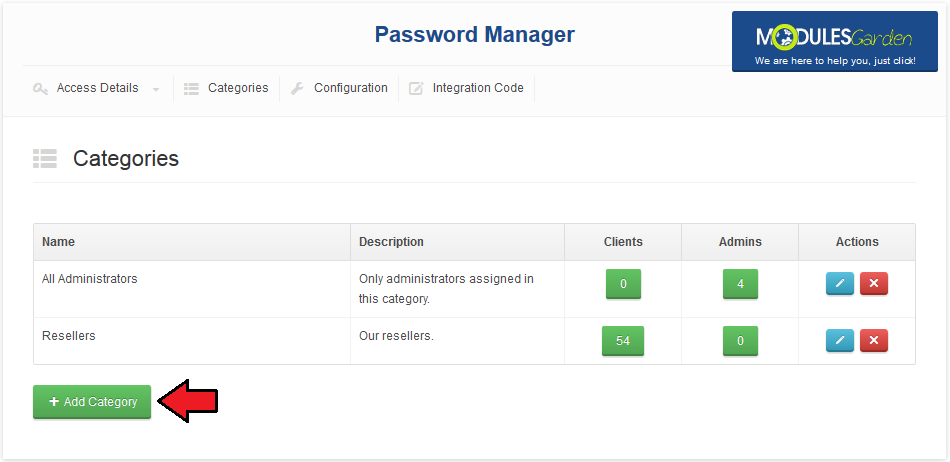
|
| Now, fill out the form with category name and description. Assign desired clients and admins to the category and press 'Add' . |
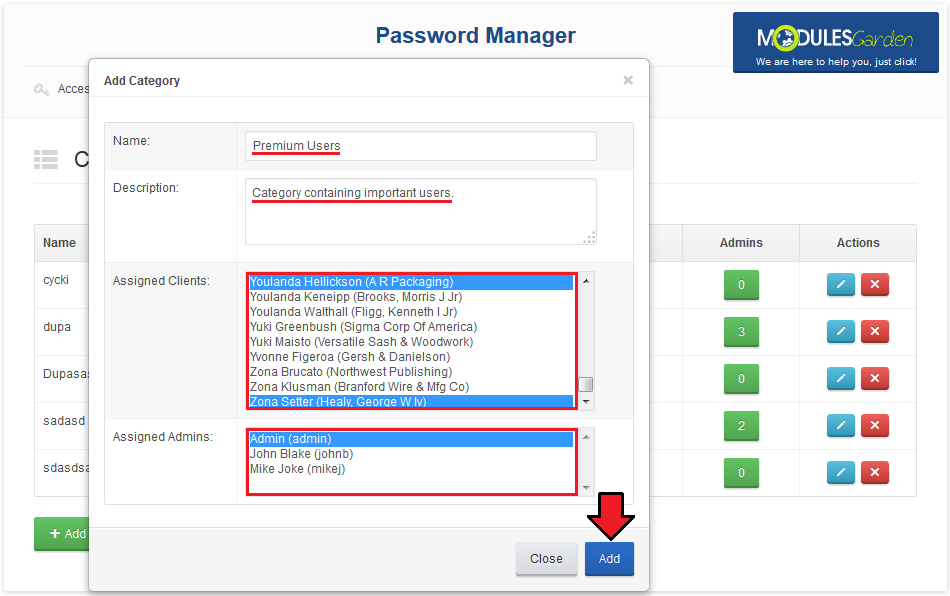
|
Add Access Details
| 'Add Access Details' tab allows you to create new access details and decide who can view them. Fill in 'Name' , enter access details into 'Username' and 'Password' . |
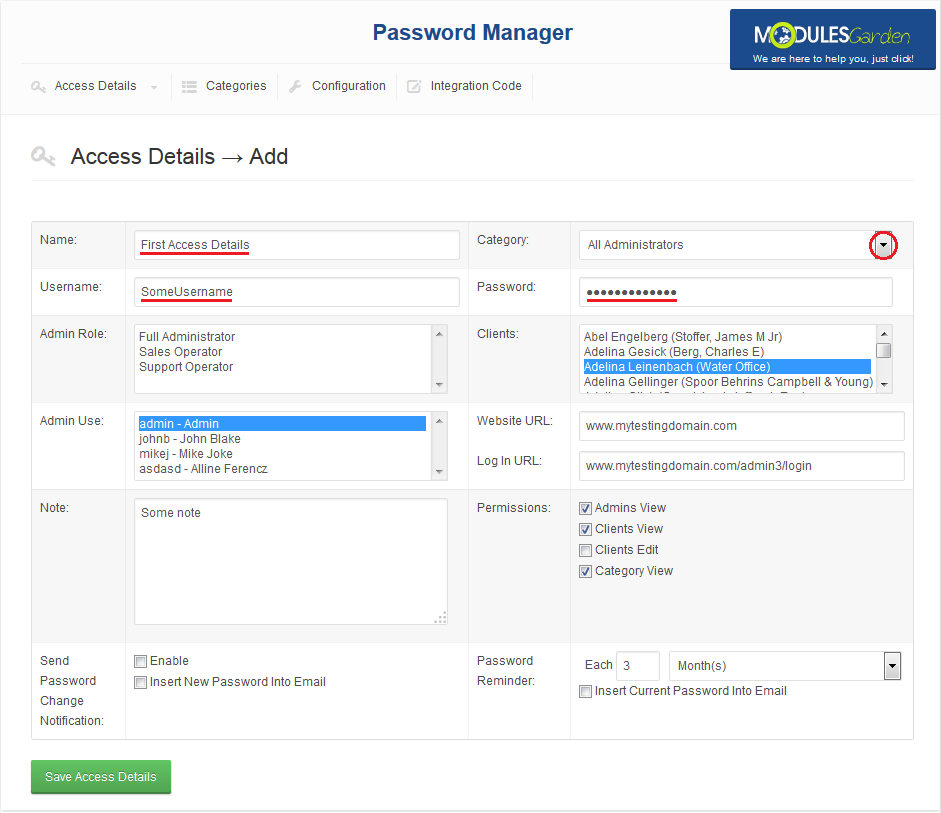
|
| Afterwards, select 'Admins' , 'Admin Groups' and 'Clients' who should have access to this details (Ctrl + click to mark more than one entry). Note: There is disjunction relation between 'Admins' and 'Admin Groups'. |
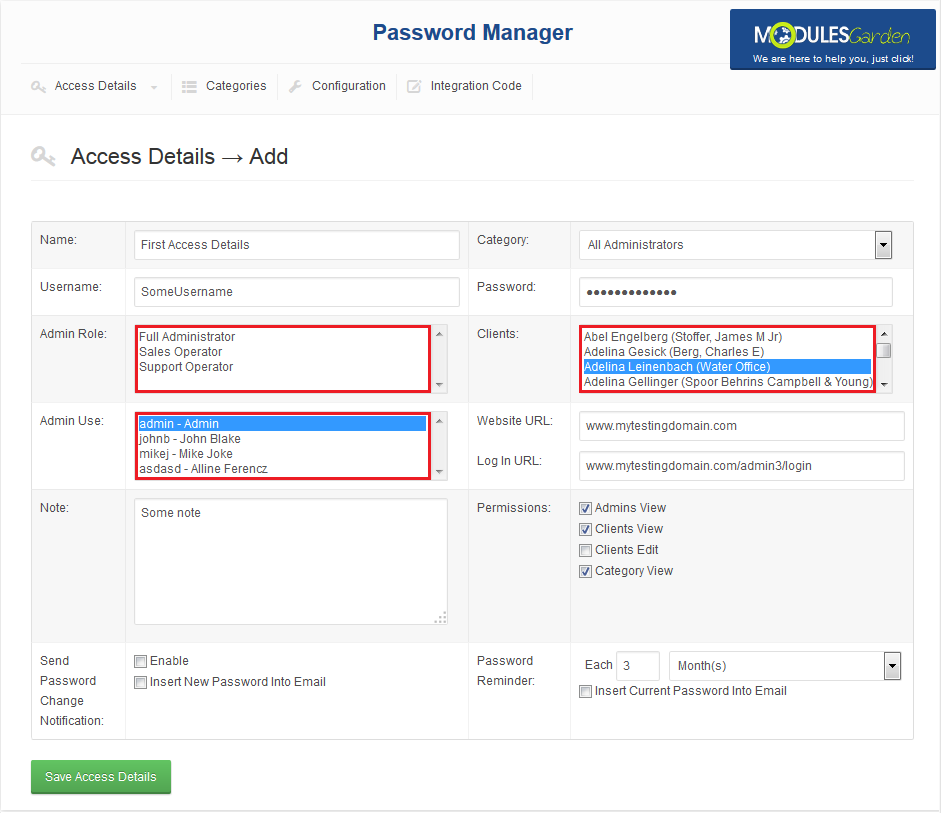
|
| You can also make your logging in easier through entering website URL and website log in URL consecutively into 'Website URL' and 'Log In URL' . To leave a note associated with access details you are creating, type it into 'Note' textbox. |
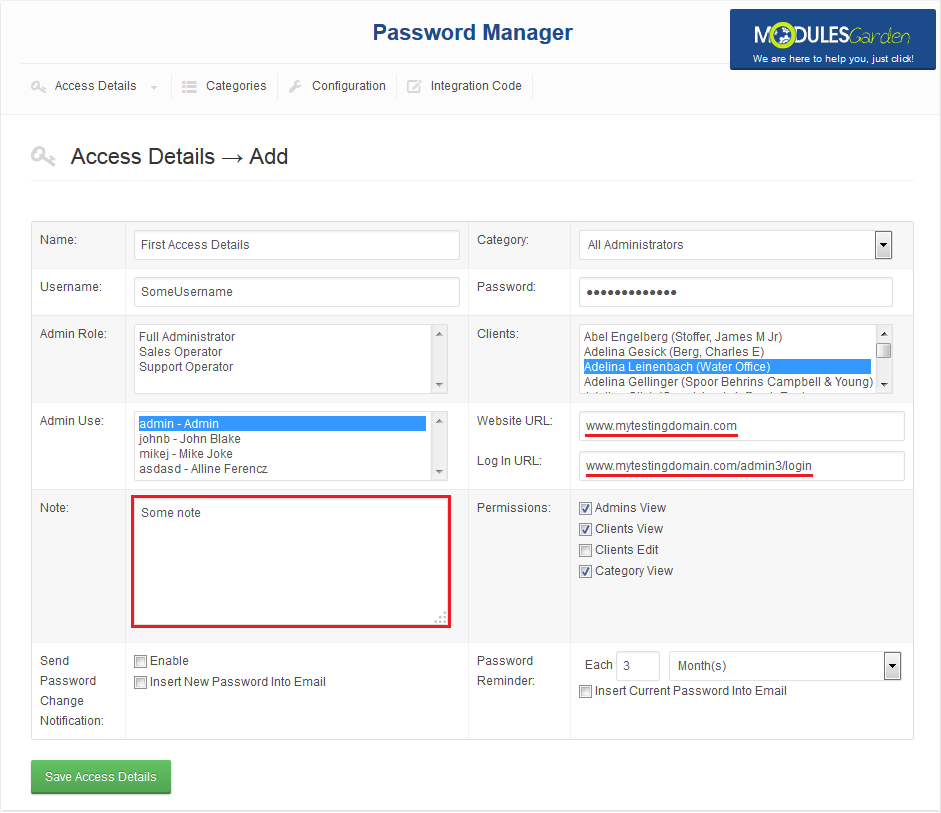
|
| 'Permissions' allows you to define clients/admins/category members privileges. Note: If you leave 'Clients' checkbox unmarked, your client will not see these access details even if they are chosen in 'Clients' option. |
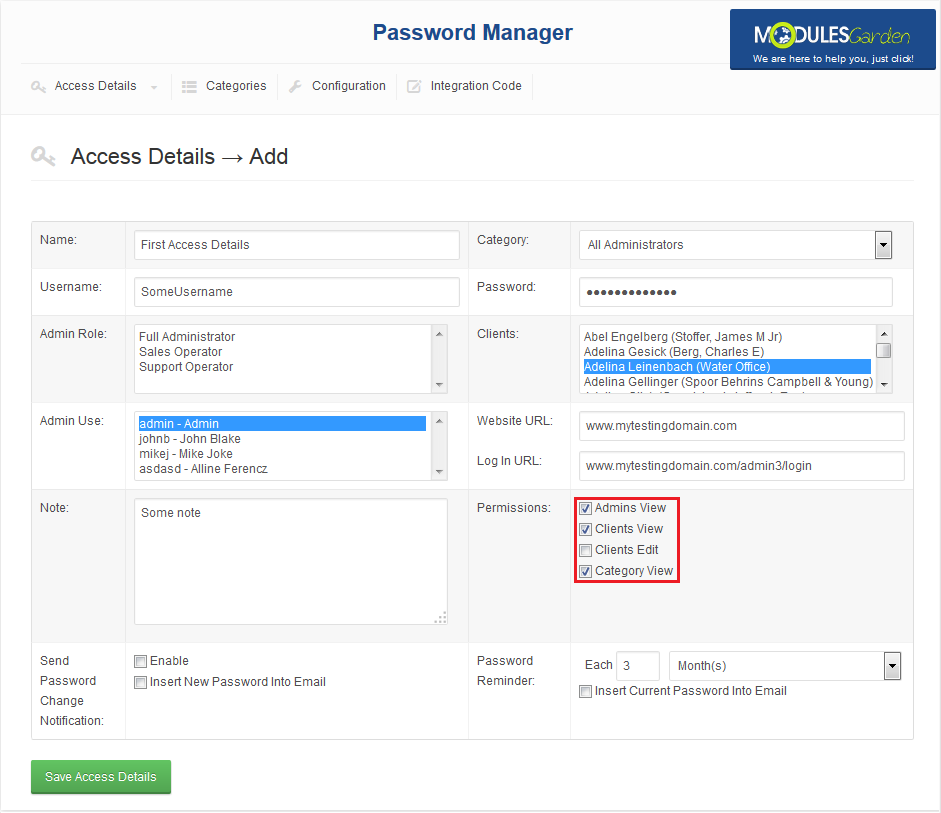
|
| At the bottom of the form you can set up messages. One is sent upon password being changed while another is a reminder about password changing for security reasons. |
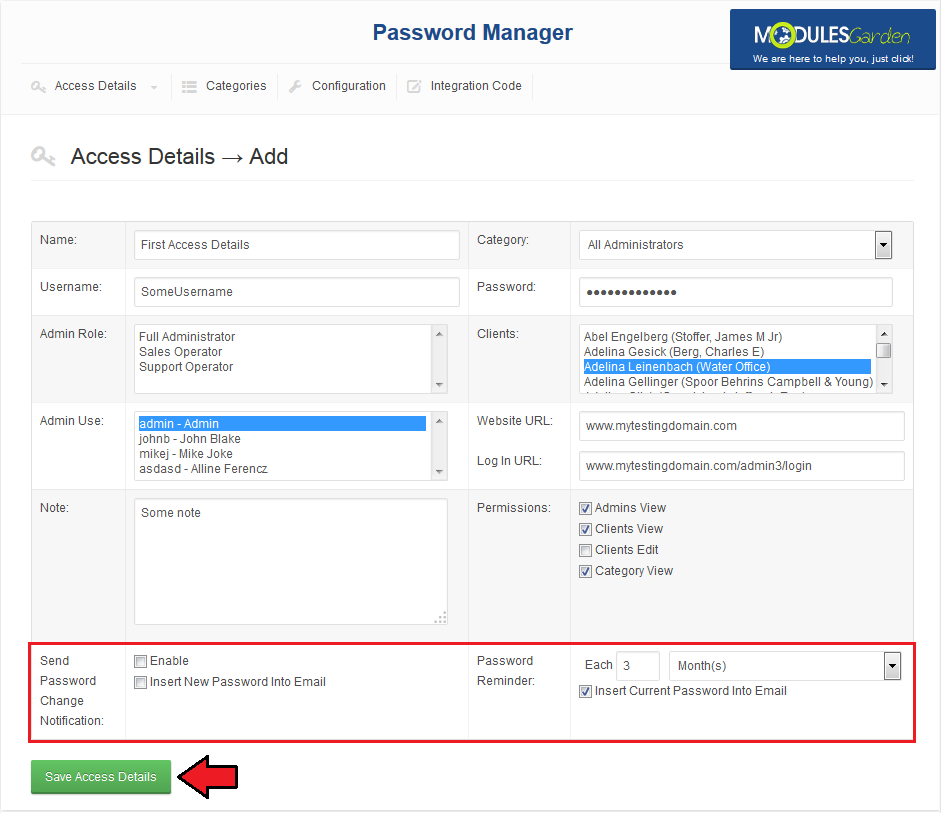
|
Access Details List
| You can find your access details and those shared with you in 'Access Details List' tab. As you can see, password visibility is bounded by color. |
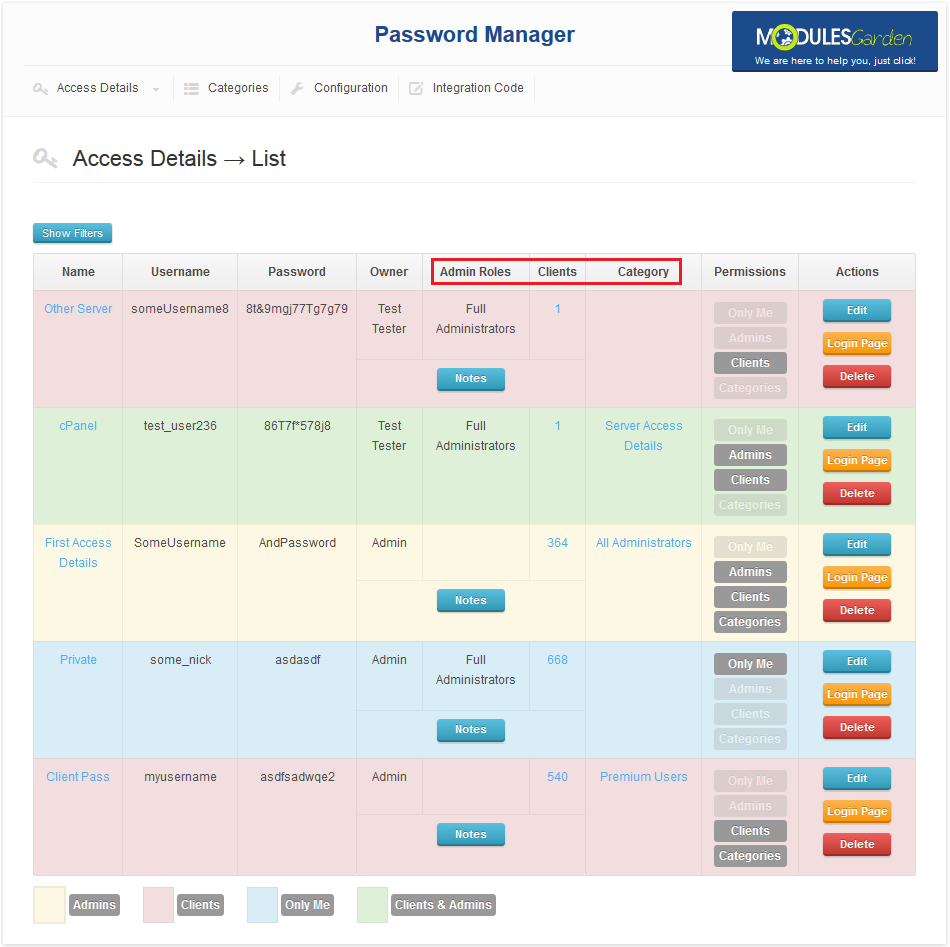
|
| You can also switch access details visibility with one click and manage them through 'Edit' and 'Delete' buttons. If you entered website URL and URL to login page, you can easily jump to them. |
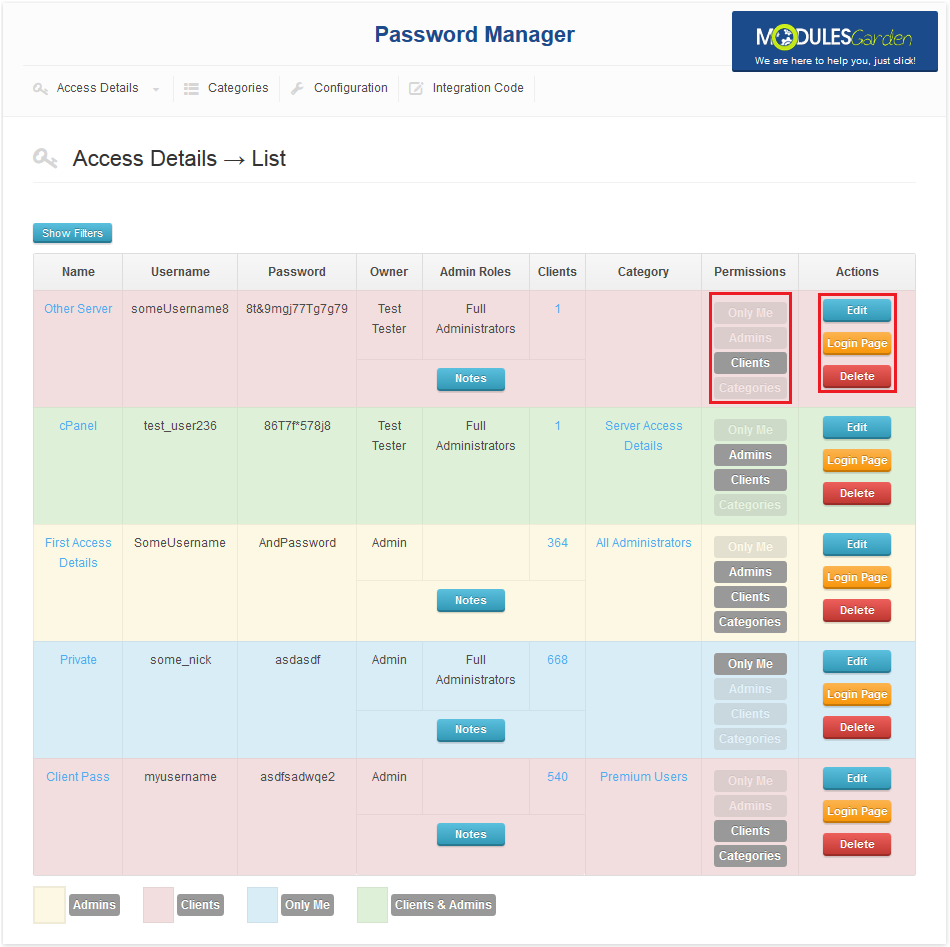
|
Admin Area Integration
| Our module integrates with your admin area as well as client area. Passwords of any client can be viewed in summary page as show below. |

|
| Your support operators are also able to access clients passwords from within ticket. As you may have noticed, these places allow them not only to see passwords, but also create new ones. |
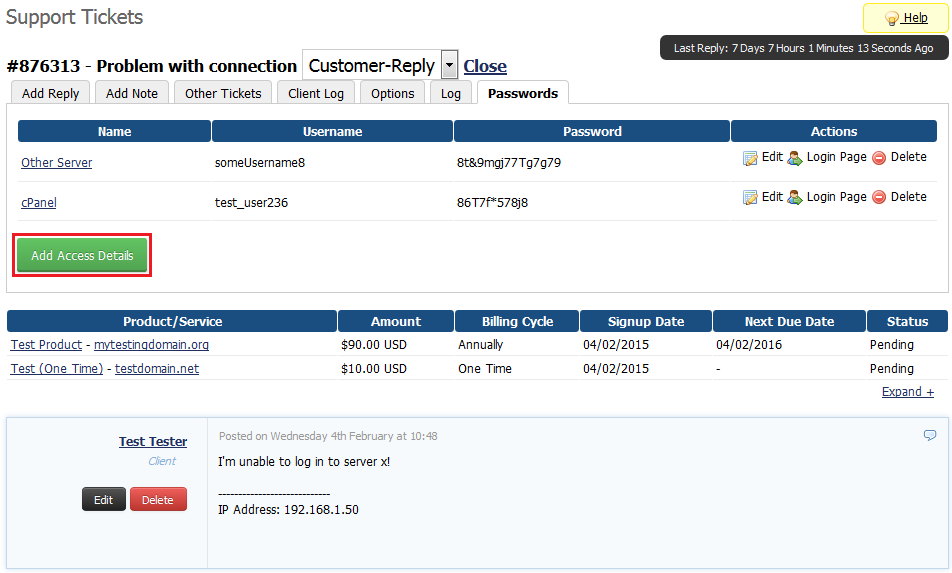
|
Client Area
| Your clients can access client area password management page through 'Password Manager' button in navigation bar. If you did not enter integration code, your clients have to add '/index.php?m=PasswordManager' to WHMCS URL in order to access 'Password Manager' . |
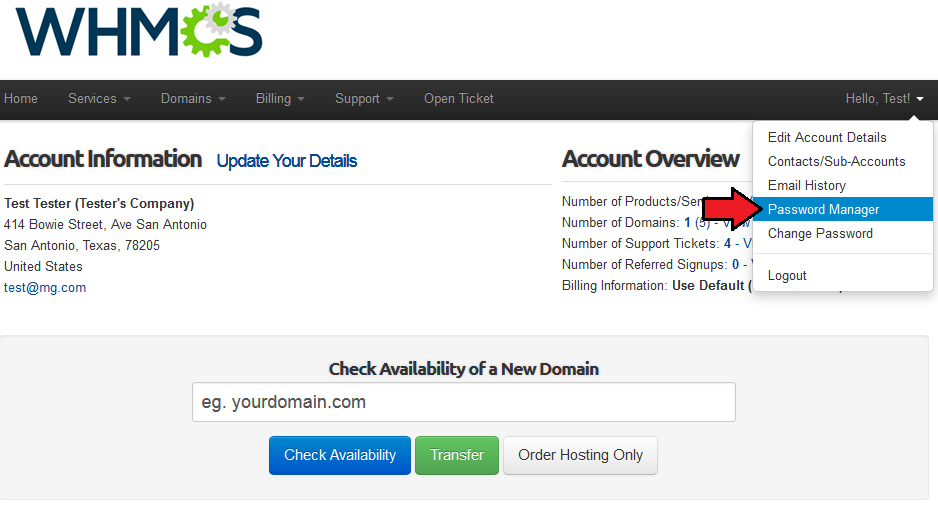
|
| In 'Password Manager' , your clients can view access details shared with them. They can also go to access details login page (through pressing 'Login Page' button) or view a note assigned to access details. |
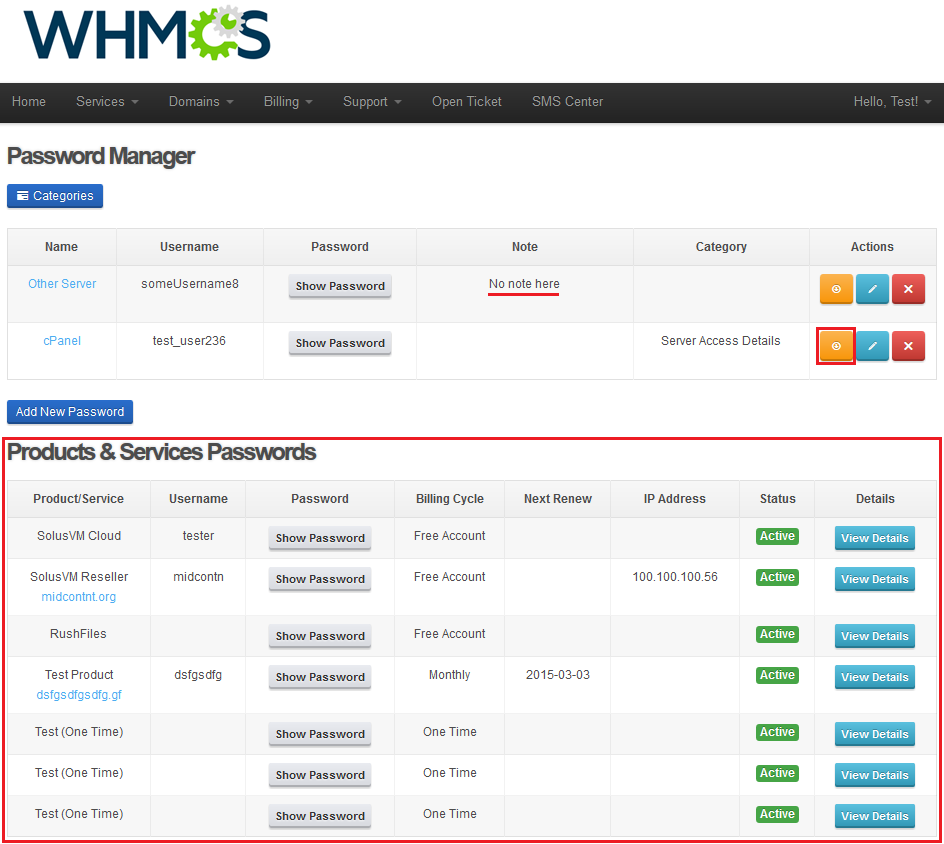
|
| If you enabled 'Manage Private Access Details' your clients can also create and share their own access details. To create access details they need to press 'Add New Password' button as shown on the following screen. |
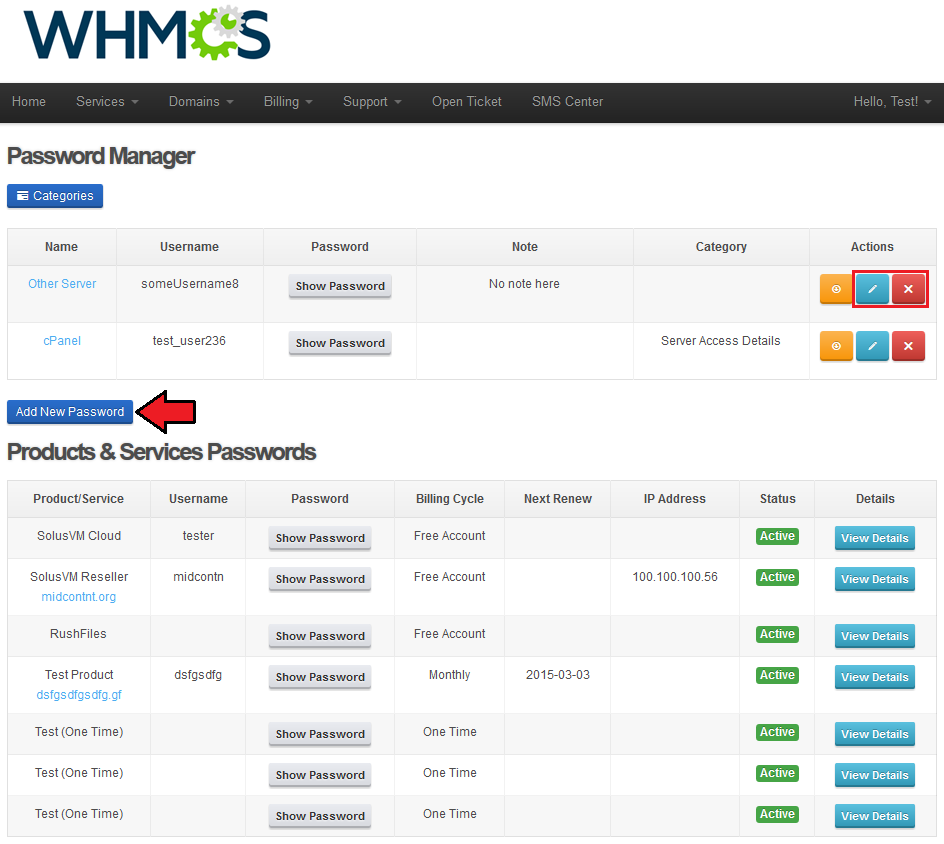
|
Add Access Details
| Creating access details from the client area is simple. It starts from typing its name and entering access details into 'Username' and 'Password' . |
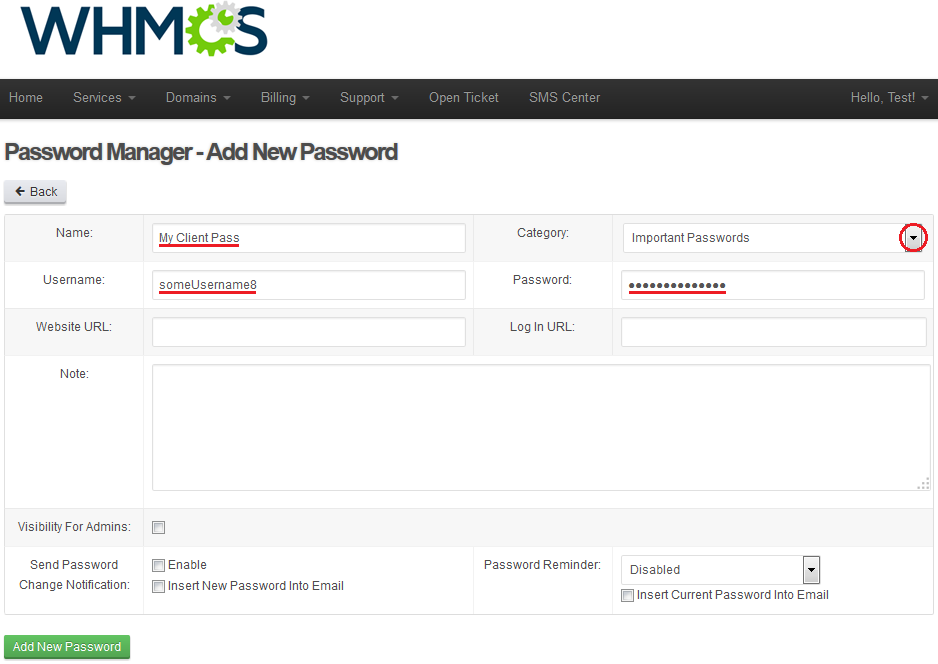
|
| Afterwards, you can type website URL and website login URL as well as leave a note. If there is an admin group with 'Extended Permissions' , your clients can make their access details visible for this admin group. |
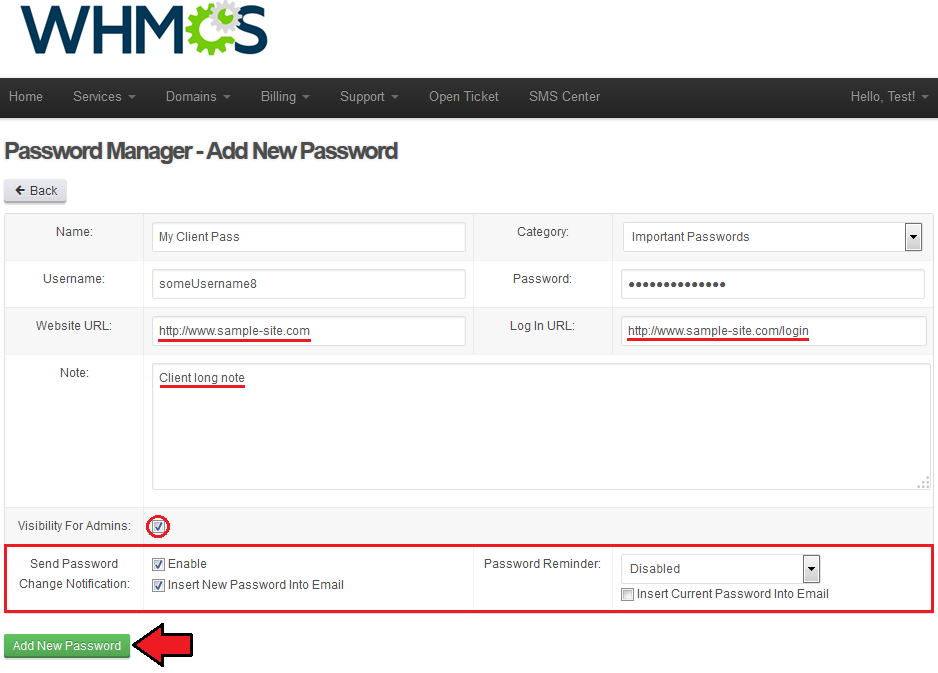
|
Add Category
| You can access category list through pressing 'Categories' button. |
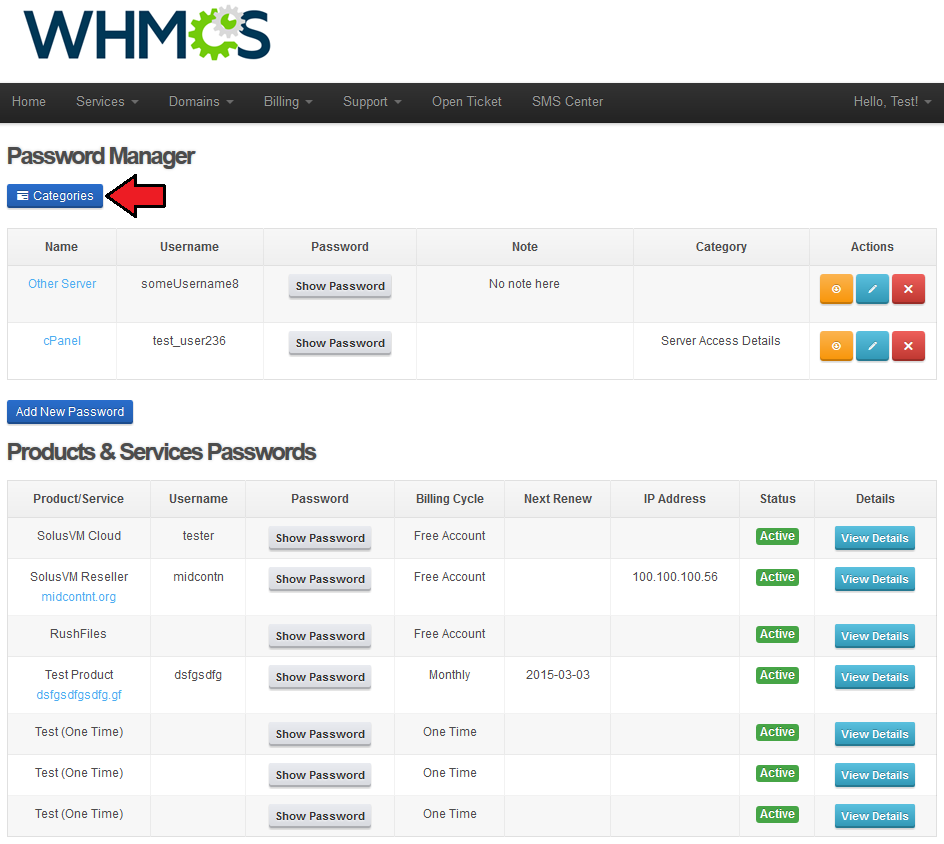
|
| As you can see on the following screen, this is the place to view all categories to which client is assigned. Additionally, here your client can add new category, press 'Add Category' to do so. |
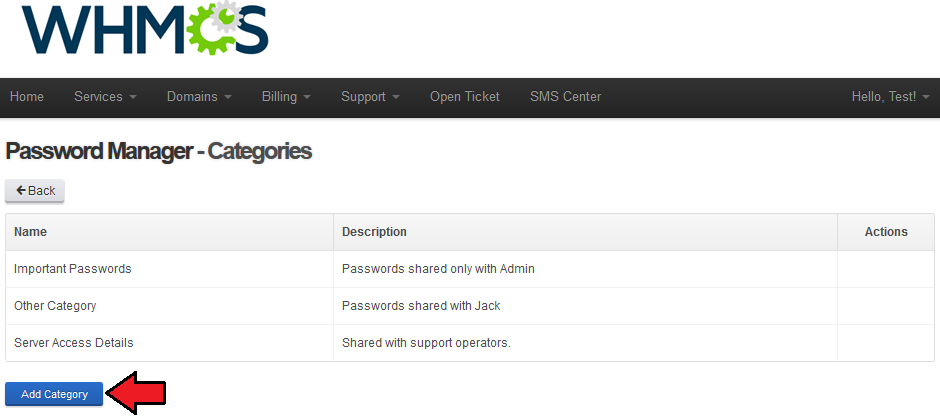
|
| Fill in category name and description and press 'Add' . Created category can be seen by this client as well as administrators in the admin area. |
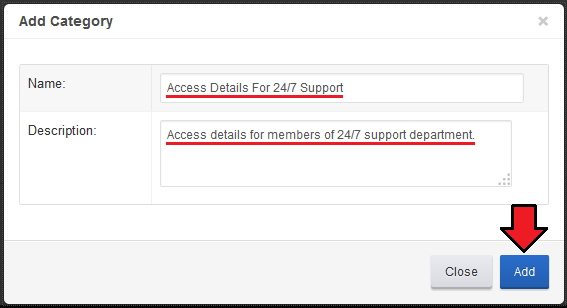
|
Tips
| Here are two tips for adding access details from the admin area.
1. There is disjunction relation between 'Admins' and 'Admin Groups' options . |
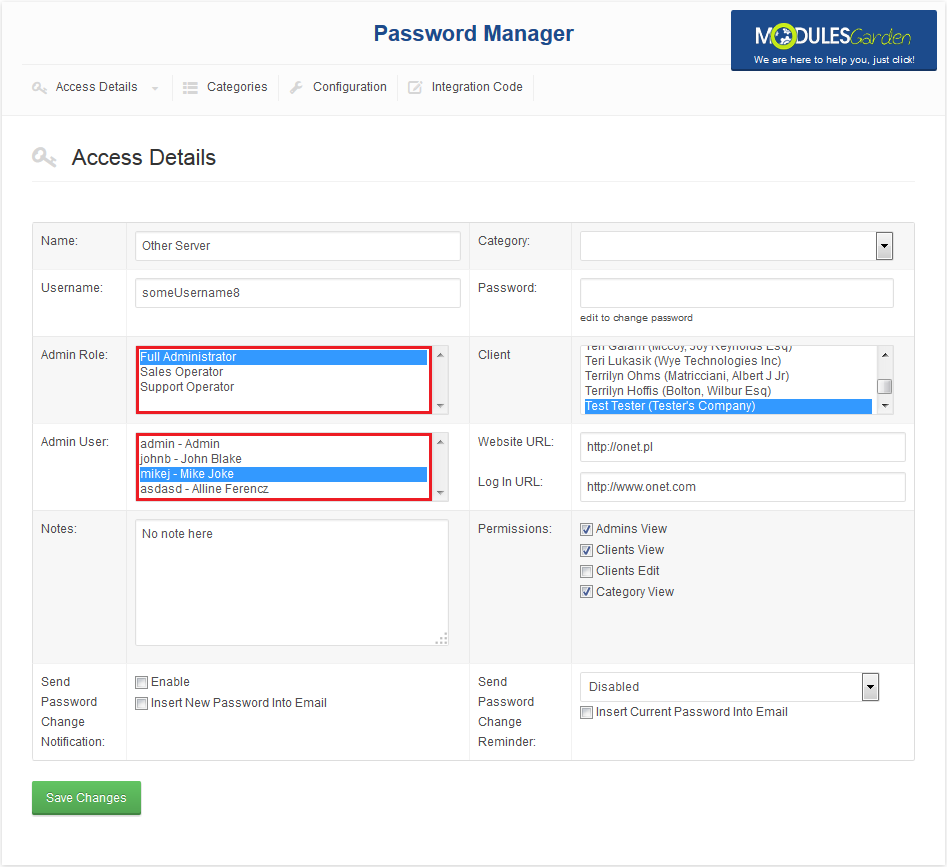
|
| 2. There are two conjunction relations while setting access details sharing. The first one is between 'Admins' and 'Admin Group' (which are bounded by disjunction relation) and 'Admins View' in 'Permissions' . |
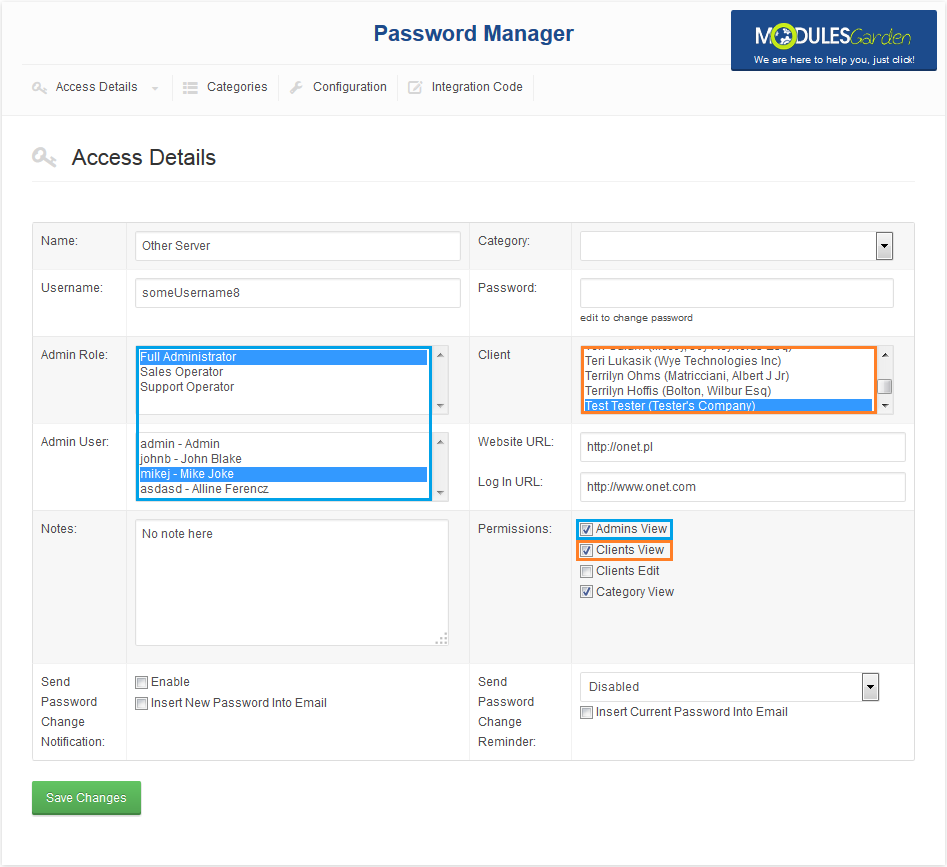
|
Common Problems
| 1. When you have problems with connection, check whether your SELinux or firewall does not block ports. |